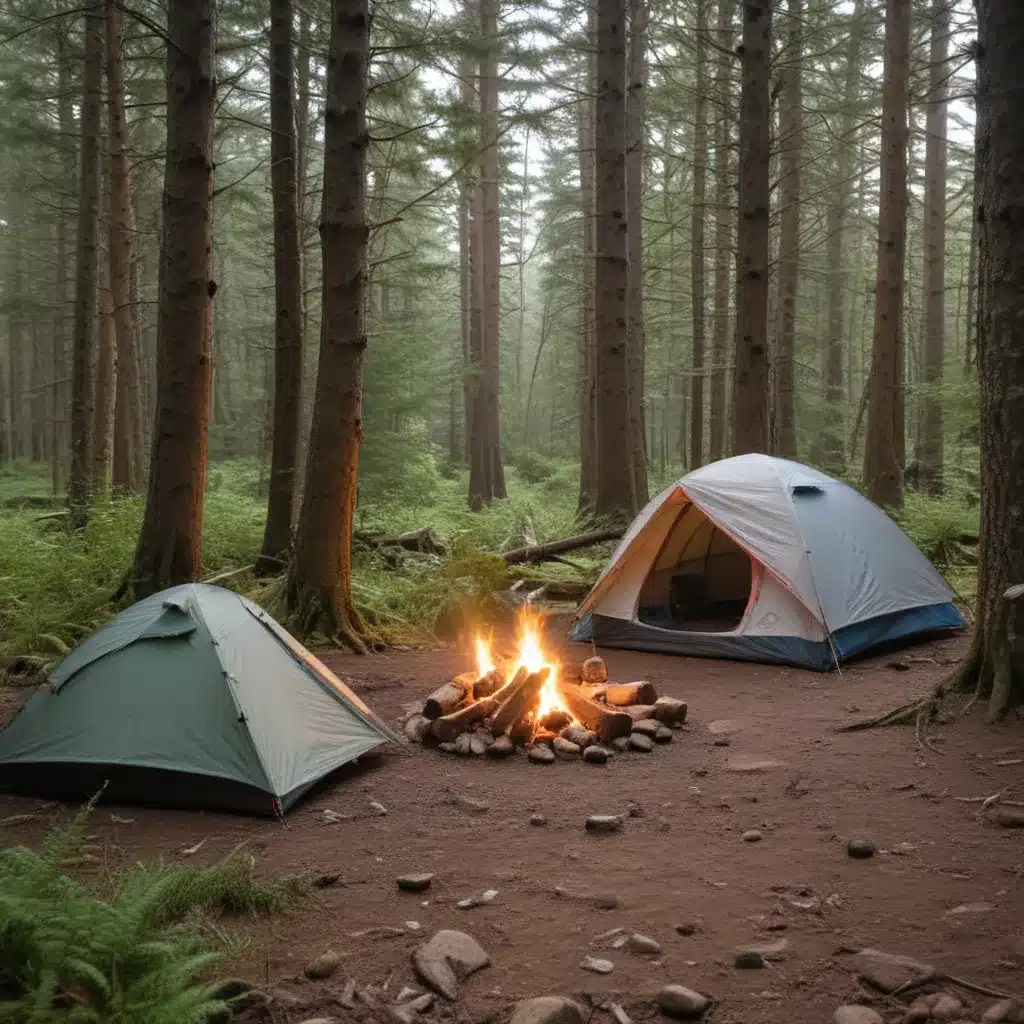
Stepping into the Highlands with Care
As I laced up my boots and gazed out over the rolling hills of the Scottish Highlands, I couldn’t help but feel a deep sense of awe and respect for the natural beauty that surrounded me. This rugged, untamed landscape was a far cry from the bustling city I had left behind, and I knew that to truly appreciate its splendor, I would need to tread lightly and treat it with the utmost care.
That’s where the Leave No Trace principles come in. Developed by the Leave No Trace Center for Outdoor Ethics, these seven guidelines are the cornerstone of responsible camping and hiking in sensitive environments like the Highlands. And trust me, if you want to have an unforgettable experience while minimizing your impact, you’ll want to commit these principles to memory.
1. Plan Ahead and Prepare
Before you even set foot on the trail, it’s crucial to do your homework. Research the area you’ll be exploring, taking note of any permit requirements, campsite restrictions, and potential hazards. This will not only ensure a smooth and safe journey, but it will also help you pack the right gear and supplies to minimize your impact.
For example, if you’re planning to camp in the Highlands, you’ll want to choose a durable, low-profile tent that won’t disturb the delicate vegetation. And instead of bringing disposable utensils and plates, opt for reusable, lightweight options that can be easily cleaned and packed out.
Loch Ness Shores is a great resource for planning your Highlands camping adventure, with detailed information on local regulations, recommended gear, and more. Be sure to check it out before you hit the trail!
2. Travel and Camp on Durable Surfaces
Once you’re out on the trail, it’s important to stay on established paths and campsites. Venturing off the beaten track can damage fragile ecosystems and lead to the creation of new, unsustainable trails.
When it comes to camping, the same principle applies. Seek out areas with hardy, resilient ground cover, like gravel or rock, rather than delicate vegetation like moss or wildflowers. And if you’re camping in a designated campsite, be sure to follow the site’s layout and use existing fire rings or tent pads.
3. Dispose of Waste Properly
This one might seem obvious, but you’d be surprised how many people still struggle with it. When nature calls, you’ll want to dig a cat hole at least 6 inches deep and 200 feet away from any water sources, trails, or campsites. And when it comes to your trash, everything – and I mean everything – needs to be packed out.
The National Park Service has some great tips on proper waste management, from how to store your food to the best ways to dispose of gray water. Take the time to familiarize yourself with these guidelines before you hit the trail.
4. Leave What You Find
Resist the temptation to collect souvenirs or disturb the natural environment. Every flower, rock, or artifact you remove is one less piece of the puzzle that makes the Highlands so special. And if you come across something that’s been left behind, like a tent or campfire ring, leave it be – someone else might need it.
Instead, take plenty of photos and soak in the sights and sounds around you. That way, you can share the magic of the Highlands with your friends and family without leaving a lasting impact.
5. Minimize Campfire Impacts
Campfires can be a trilling and cozy way to end the day, but they also come with a lot of responsibility. Before you light a fire, be sure to check for any local restrictions or bans, and choose a site that’s at least 200 feet away from any water sources or trails.
When you’re done, make sure the fire is completely extinguished and the ashes are scattered. And if you’re in a designated campsite, use the existing fire ring rather than creating a new one. That way, you can enjoy the warmth and ambiance of a campfire without leaving a lasting scar on the landscape.
6. Respect Wildlife
The Highlands are home to a rich and diverse array of wildlife, from the iconic red deer to the elusive golden eagle. As you explore this stunning natural world, it’s crucial to give these animals the space and respect they deserve.
That means keeping your distance, avoiding sudden movements or loud noises, and never approaching or feeding them. After all, you’re the visitor in their domain – so be sure to treat them with the utmost care and reverence.
7. Be Considerate of Other Visitors
Finally, remember that you’re not the only one soaking in the beauty of the Highlands. Be mindful of your fellow adventurers, keeping your noise levels down and giving them a wide berth on the trail. And if you’re camping, be sure to choose a site that’s at least 200 feet away from any other campers.
By following these seven principles, you can help preserve the magic of the Scottish Highlands for generations to come. So lace up your boots, pack your bags, and get ready to explore this breathtaking corner of the world – just remember to leave no trace along the way.
The Leave No Trace Center for Outdoor Ethics is a fantastic resource for learning more about these important guidelines, as well as the latest research and best practices for responsible outdoor recreation. I highly recommend checking them out before your next Highland adventure.

